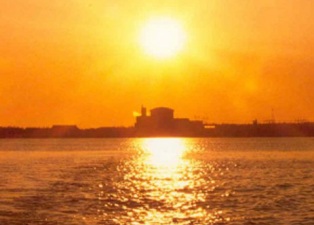Atomic Energy of Canada Ltd has been criticised on its openness by the provincial government of New Brunswick in a letter to Canada's federal government as delays mount for the refurbishment of Point Lepreau.
 |
| Point Lepreau (Image: NB Power) |
Kier wrote to Christian Paradis, the minister of natural resources, in his role as controller of the Canadian government's ownership of AECL. He wanted Paradis to instruct AECL to be "open and transparent and update the public on the project and its current status" and copied AECL president Hugh MacDiarmid to make sure he knew.
The project to extend the service period of the Point Lepreau nuclear power plant involves the removal and replacement of tubing in all the reactor's 380 fuel channels - the first time this has been done. Special tools have been developed by AECL to tackle the job, and these too are the firsts of their kind. When the job is complete, Point Lepreau will be able to operate for another 25 to 30 years. Beyond that, owner NB Power and the province would like a new nuclear reactor and they have signed a letter of intent towards this with Areva.
The refurbishment is about 75% complete, AECL said in an update on 21 July, noting that installation of the new calandria tubes in the reactor vessel "has encountered challenges with the seal tightness of some of the new tubes not meeting the acceptance criteria."
In a video from AECL, project director Bob Keeler said the gaps in the tube seals are about one hundredth the thickness of a human hair: "We're talking minute, in something that needs to be almost perfect. It's like a mirror with just a little bit of a bump." The roughness of the tube inserts has proven to be enough to allow 'leak paths' to be highlighted by tests with helium gas.
The company is examining a number of ways to create tight enough seals to meet standards in all cases, for example polishing away roughness or using deforming inserts, both of which have been successfully tested. Keller said all of AECL as well as a team from NB Power are "100% engaged" on the task.
Researched and written
by World Nuclear News




_91467.jpg)
_47120.jpg)
_16439.jpg)






